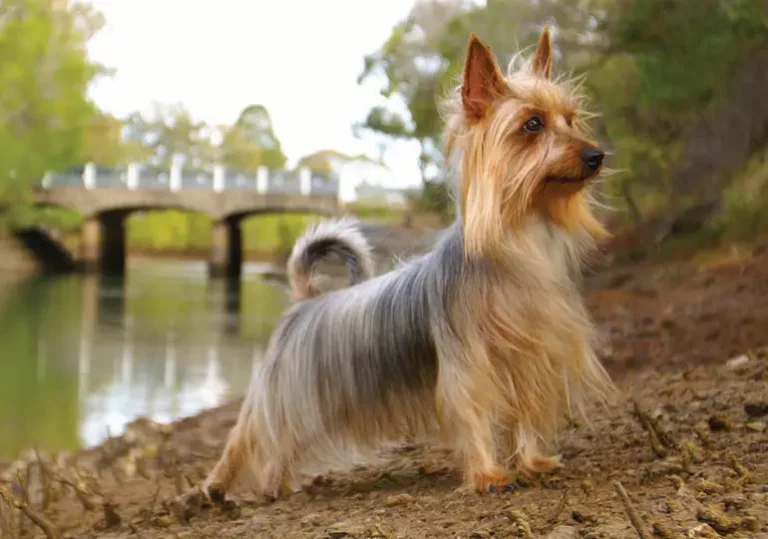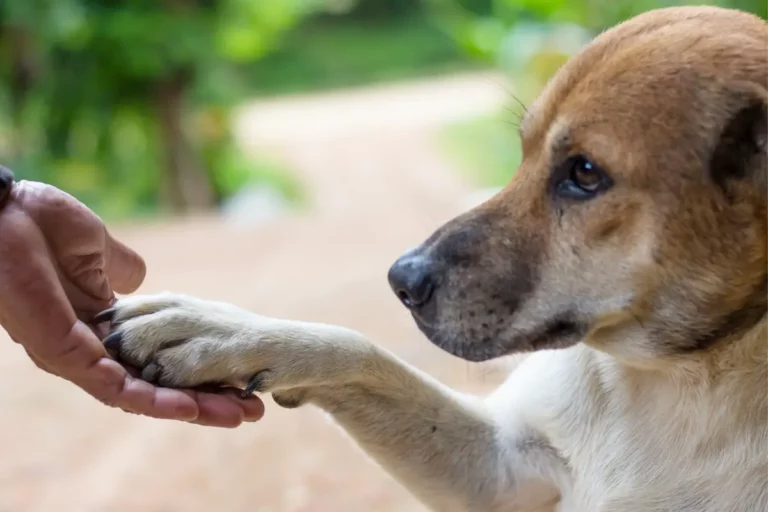Why Does My Dog Have Black Dots On Her Nipples?
As a dog owner, you may sometimes come across little quirks in your furry friend’s appearance that make you wonder if they’re cause for concern. One such quirk might be black dots on your dog’s nipples. Fear not!
This blog post is here to provide clarity on this peculiar occurrence and put your mind at ease. More often than not, black dots on a dog’s nipples are harmless, but it’s essential to be well-informed and know when to consult with your veterinarian.
In this post, we’ll delve into the possible causes of these black dots, how to monitor and care for your dog’s nipples, and the warning signs that indicate you should seek professional advice. So, let’s embark on this journey together to better understand our beloved four-legged companions and keep them happy and healthy!
Key takeaways
Black dots on a dog’s nipples are often a natural occurrence and not a cause for concern.
These dots, known as “nipple freckles,” are commonly seen in dogs with light-colored or thin fur.
Nipple freckles are caused by increased pigmentation in the skin and hair follicles.
They are typically benign and do not require treatment.
However, if there are sudden changes in the appearance, size, or texture of the dots, it’s advisable to consult a veterinarian for further evaluation.
Common Causes of Black Dots on Dog Nipples
Understanding the possible reasons behind the appearance of black dots on your dog’s nipples can help alleviate your concerns and ensure that you provide the best care for your furry friend. Here are the most common causes of these mysterious spots:
1. Sebaceous Glands
Description and function of sebaceous glands: Sebaceous glands are small oil-producing glands present in your dog’s skin, including around the nipple area. They produce sebum, which helps lubricate and protect the skin.
Sebaceous gland enlargement in dogs: Sometimes, these glands may enlarge or become more noticeable, leading to the appearance of black dots on your dog’s nipples. This is typically harmless and does not require treatment.

2. Hyperpigmentation
Melanin production in dogs: Melanin is a natural pigment responsible for your dog’s skin and fur color. It also plays a role in protecting the skin from harmful UV rays.
Factors that may lead to hyperpigmentation: Age, hormonal changes, or skin irritation can result in an increase in melanin production, leading to darker spots or patches on your dog’s skin, including the nipples. This is generally harmless and does not require treatment unless the underlying cause, such as skin irritation, needs to be addressed.
3. Blackheads
Understanding blackheads in dogs: Just like in humans, dogs can develop blackheads or comedones, which are clogged hair follicles filled with dead skin cells, oil, and dirt.
Common causes and treatment options: Blackheads can form due to poor hygiene, hormonal imbalances, or certain medications. Maintaining good hygiene, using a gentle dog-specific cleanser, and consulting with your veterinarian for appropriate treatments can help manage and prevent blackheads in dogs.

4. Nevi or Moles
The formation of nevi in dogs: Nevi, also known as moles, are benign growths that may appear on your dog’s skin, including the nipple area. They consist of a cluster of pigment-producing cells called melanocytes.
Determining whether a nevus is harmful or benign: While most nevi are harmless, it’s essential to monitor them for any changes in size, shape, or color, as they can potentially develop into malignant melanoma. Consult with your veterinarian if you notice any concerning changes.
When to Be Concerned About Black Dots
While the majority of black dots on your dog’s nipples are harmless, it’s crucial to be aware of the warning signs that may indicate a more serious issue. Here are some situations when you should be concerned about black dots on your dog’s nipples:
Signs of Infection
Symptoms of infection in dogs: If the black dots are accompanied by redness, swelling, discharge, or an unpleasant odor, they may be a sign of infection. Infections can occur due to bacterial or fungal growth, often resulting from skin irritation or an underlying health issue.
Treatment options for infections: Consult your veterinarian promptly if you suspect an infection. They will likely prescribe appropriate medications, such as antibiotics or antifungal treatments, to address the issue.
Skin Growths and Tumors
Types of skin growths and tumors: While many skin growths and tumors in dogs are benign, some can be malignant and pose a risk to your dog’s health. Malignant tumors can grow quickly, change in appearance, and spread to other areas of the body.
Importance of early detection and treatment: If you notice a rapidly growing or changing growth on your dog’s nipple, consult your veterinarian as soon as possible. Early detection and treatment are crucial for a better prognosis and recovery.
Abrasions and Scabs
Trauma-related causes for black dots on nipples: In some cases, black dots may form as a result of an abrasion or injury to the nipple area. These may appear as scabs or darkened, raised areas on the skin.
How to properly care for your dog’s wounds: Gently clean the affected area with a mild antiseptic solution and monitor the healing process. If the wound does not improve or shows signs of infection, seek veterinary assistance.
By keeping an eye out for these warning signs, you can ensure that you address any potential issues promptly, safeguarding your dog’s health and wellbeing.
How to Monitor and Care for Your Dog’s Nipples
Proper care and monitoring of your dog’s nipples can help prevent potential issues and ensure their overall skin health. Here are some tips to keep your dog’s nipples in tip-top shape:
Regular Inspection
Importance of routinely inspecting your dog’s nipples: Regular inspections can help you identify any changes or issues early on, allowing you to take appropriate action when needed.
What to look for during inspections: Examine the nipple area for any changes in size, shape, color, or texture, as well as for signs of infection, such as redness, swelling, or discharge.
Cleaning and Hygiene
Tips for maintaining good hygiene: Gently clean your dog’s nipple area with a soft, damp cloth or a gentle dog-specific cleanser to remove dirt and debris. Be sure to dry the area thoroughly afterward.
Preventing skin irritations and infections: Regular cleaning can help minimize the risk of skin irritations and infections, ensuring that your dog’s skin remains healthy.
Diet and Nutrition
The role of diet in skin health: A well-balanced diet rich in essential nutrients, such as omega-3 fatty acids, can help promote healthy skin and prevent skin issues.
Recommended food and supplements for optimal skin health: Provide your dog with high-quality dog food and consider adding supplements like fish oil to support their skin health. Always consult with your veterinarian before making any changes to your dog’s diet or introducing supplements.
Seeking Veterinary Assistance
When to consult your veterinarian: If you notice any concerning changes in your dog’s nipples, such as rapid growth, unusual color, or signs of infection, seek veterinary advice as soon as possible.
What to expect during a veterinary visit: Your veterinarian will examine your dog’s nipples and may perform diagnostic tests, such as skin scrapings, cultures, or biopsies, to determine the cause of the issue and recommend appropriate treatments.
By following these guidelines, you can ensure that your dog’s nipples remain healthy and promptly address any concerns that may arise, helping to keep your four-legged companion happy and comfortable.
Frequently Asked Questions
Are black dots on my dog’s nipples a sign of cancer?
While black dots on your dog’s nipples are not a direct sign of cancer, it’s essential to consult with a veterinarian if you notice any unusual growths or changes in your dog’s skin, as early detection is critical for successful treatment.
Can I use human acne treatments on my dog?
It is not recommended to use human acne treatments on your dog, as their skin is more sensitive than ours. Consult with your veterinarian for appropriate treatments specifically designed for dogs.
How often should I inspect my dog’s nipples?
Inspecting your dog’s nipples once a month is sufficient for most dogs. However, if your dog has a history of skin issues, you may need to inspect them more frequently.
Do male dogs also have black dots on their nipples?
Yes, male dogs can also develop black dots on their nipples. The causes for black dots in male dogs are similar to those in female dogs, and the same care and monitoring should be applied.
Final Thoughts
As we’ve discovered throughout this blog post, black dots on your dog’s nipples are generally harmless and can be attributed to various causes, such as sebaceous glands, hyperpigmentation, blackheads, or nevi.
However, it’s essential to stay vigilant and monitor your dog’s nipples regularly to identify any concerning changes that may indicate a more serious issue. Proper care, including maintaining good hygiene and providing a well-balanced diet, can help support your dog’s skin health and prevent potential problems.
Remember that it’s always better to err on the side of caution, so don’t hesitate to consult with your veterinarian if you have any concerns or questions about your dog’s nipples or overall health. By staying informed and attentive, you can ensure your beloved pet’s wellbeing and enjoy a long, happy life together.







